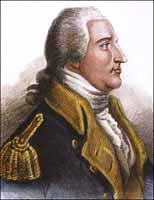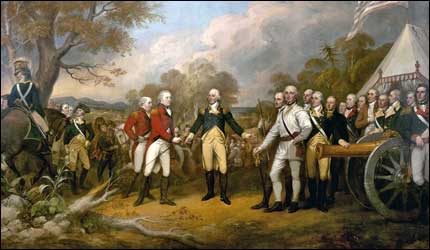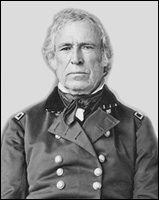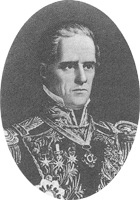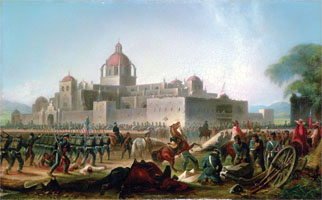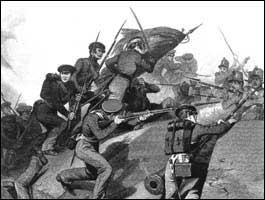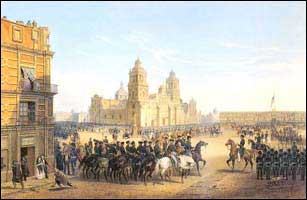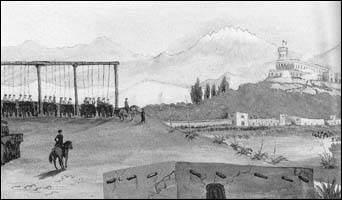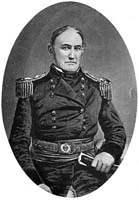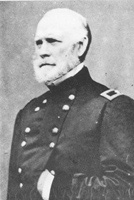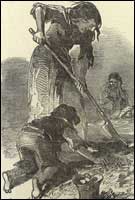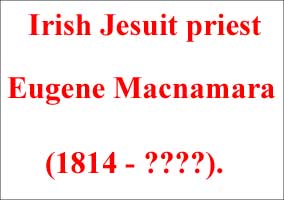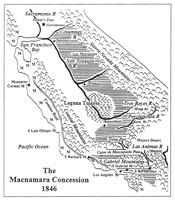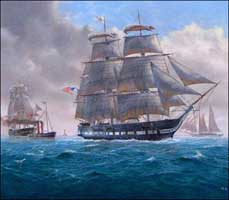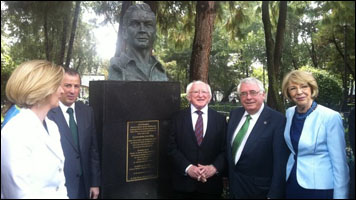In the United States, the name Benedict Arnold is synonymous with treason, treachery, and betrayal. However, general Arnold almost succeeded in driving the British out of Canada, which was the first step to take if the Revolution was to be a success.
After the failed invasion, Benjamin Franklin, Samuel Chase, Charles and John Carroll set out on a top secret mission to Canada. Their mission was to obtain Canadian support for the coming Revolution. They failed to obtain Canadian support but they did obtain a promise of neutrality. General Sir Guy Carleton also promised not to use smallpox on the newly created Continental Army. This ban on the use of smallpox did not apply to the slaves who fled their plantations and joined the British:
General Arnold suffered a broken leg when his horse was shot out from under him. If general Arnold had died from his wounds at Saratoga, he would be considered one of the greatest HEROES of the Revolution. His leg wound left Arnold bedridden for five months. Later, while still unfit for field service and serving as military governor of Philadelphia, Arnold had a falling out with General Washington over the entire conduct of the war. After the falling out with general Washington, the only option left for Arnold was to go to Canada . . . or British controlled Florida....He was not welcome in Canada, and Florida didn't appeal to him, so he became a turncoat and accepted a commission in the British Army. The British gave Arnold a brigadier general's commission, with an annual income of several hundred pounds, but paid him only £6,315, plus an annual pension of £360, because his plot to capture West Point had failed.
In the United States, his only monument is a BOOT . . . with no name....Arnold's memory suffers from damnatio memoriae which is a Latin phrase literally meaning "condemnation of memory" in the sense of a judgment that a person must not be remembered. It was a form of dishonor that was passed by the Roman Senate upon traitors or others who brought discredit to the Roman state. The intent was to erase someone from history, or consign them to oblivion. The Irish Benedict Arnold!!In 1817, John Riley or O'Reilly was born in Clifden, Co. Galway, Ireland. As today, Hibernia was a vital part of the British Empire. As a youth, he joined the British Army in Canada, and by 1845 he attained the rank of sergeant. In 1843, sergeant John Riley "deserted" from the British Army in Canada, and crossed the undefended border into Michigan. In September 1845, he enlisted in the United States Army and took the oath of allegiance to this country. Riley knew that war between Mexico and the U.S. was imminent. Just 2 weeks before the war started, he was stationed at the Rio Grande, opposite the Mexican town of Metamoros. That was when he deserted the U.S. Army and took about 200 fellow turncoats with him.
After obtaining a pass to attend mass, sergeant Riley swam the Rio Grande, and joined the Mexican Army, stationed in the town of Matamoros, across the river from Fort Texas.
The Siege of Fort Texas marked the beginning of active campaigning by the armies of the United States and Mexico during the Mexican-U.S. War. The Mexicans were supremely confident of victory, because they had a large professional army, supplied with the latest British rifles and cannon. To their complete surprise, they lost battle after battle, until Santa Ana had to be recalled from exile to help their faltering army. In August 1846, Santa Anna returned from exile in Havana. He proceeded immediately to Mexico City. By that time the British controlled all the silver mines in Mexico, so with the help of British ambassador Charles Bankhead, he was "elected" President, with Gómez Farías as his Vice President.
Riley was promoted to major, and his prior combat experience with the British Army caused heavy casualties among his former "comrades" in the U.S. Army.
At the battle of Buena Vista, Riley's battery was the most deadly in the Mexican arsenal, causing a high percentage of the 272 U.S. casualties. Benedict Arnold Riley made a last stand at Churubusco!!With the Mexican Army in full retreat, Riley and his deserters decided to make a last stand at the San Mateo convent in Churubusco.
General Scott and his small army of just over 6,000 men entered Mexico City in triumph, on September 14, 1847. Admiral Seymour and his British Squadron off the coast of California was eagerly awaiting the final outcome of the war, and the admiral was bitterly disappointed!!
The great victory of general Scott and his small army was marred by the hanging of the deserters. British propaganda began to circulate among the huge number of Irish immigrants stating that the hangings were motivated by religious prejudice. After the peace treaty was signed, and the U.S. fulfilled its Manifest Destiny by extending from sea to shining sea, the sore losers in Mexico and the U.S. began to gripe that Mexico lost half of its territory!
Judas Riley escaped the noose; he received a big reward from Santa Anna, and made his way back to Canada and a comfortable retirement!! The USS Jamestown's mission of mercy to Ireland in 1847In the early part of the 19th century, the staple diet of the Irish people was the POTATO. In 1847, "blight" struck the potato crop. Although the potato crop failed, the country was still producing and exporting more than enough grain crops to feed the population. Records show that during that period, Ireland was exporting approximately thirty to fifty shiploads per day of food produce. In addition, the seas around the island were teeming with FISH.
Only a people in dire straits would risk the voyage around Cape Horn to California. The only other option was crossing the disease ridden Isthmus of Panama . . . or joining the U.S. pioneers on the dangerous overland trek.
In 1847, both Houses of Congress, with the President and Secretary of the Navy, authorized 2 ships to sail to Ireland with relief supplies for that "famine" stricken country:
The ship was loaded up with food by volunteers at Boston Harbor.
When Forbes arrived in Cork, he was invited to a BANQUET:
There was plenty of food available for everybody....The "famine" was just a perfidious trick to get the Latin Church Irish to start California dreamin!! The President of Ireland unveiled a "monument" to Benedict Arnold Riley!!It is almost beyond belief . . . but the President of Ireland unveiled a "monument" to Judas Riley in October 2013.
There is no date on the plaque showing the birth or death of Riley. Most people believe that he was born in 1817, it is probable that he returned to Canada in 1850, and rejoined his regiment there. It is certain that when Judas Riley finally met his Maker, the real Saint Patrick was first in line to throw him into HADES, for disgracing the name of Hibernia's patron saint!! The whole scheme of colonizing California with Papal Irish was doomed to failure, because the revived State of Israel was destined to extend from sea to shining sea:
In the Book of Ezekiel, written about 2,500 years ago, the Prophet also predicted that the borders of reborn Israel would extend from East to West:
Vital links References Eisenhower, John S.D. Agent of Destiny: The Life and Times of General Winfield Scott, The Free Press, New York, 1997. Fowler, Will. Santa Anna of Mexico. University of Nebraska Press, Lincoln & London, 2007. Fox, John. Macnamara's Irish Colony and the United States Taking of California in 1846. McFarland & Co., Pub., Jefferson, North Carolina, and London. 2000. Forbes, Robert Bennet. The Voyage of the Jamestown On Her Errand of Mercy. Eastburn's Press, Boston, 1847. Johnson, Timothy D. A Gallant Little Army: The Mexico City Campaign. University Press of Kansas City, 2007. Miller, Robert Ryal. Shamrock and Sword. The Saint Patrick's Battalion in the U.S.-Mexican War. University of Oklahoma Press, OK. 1989. Stevens, Peter F. The Rogue's March: John Riley and the St. Patrick's Battalion, 1846–48. Potomac Books, Washington City, 1999. Copyright © 2014 by Patrick Scrivener | |||||||||||||||||||||||||||||||||||||||||||||||||||||||||||||||||||||||||||||||||||||||
